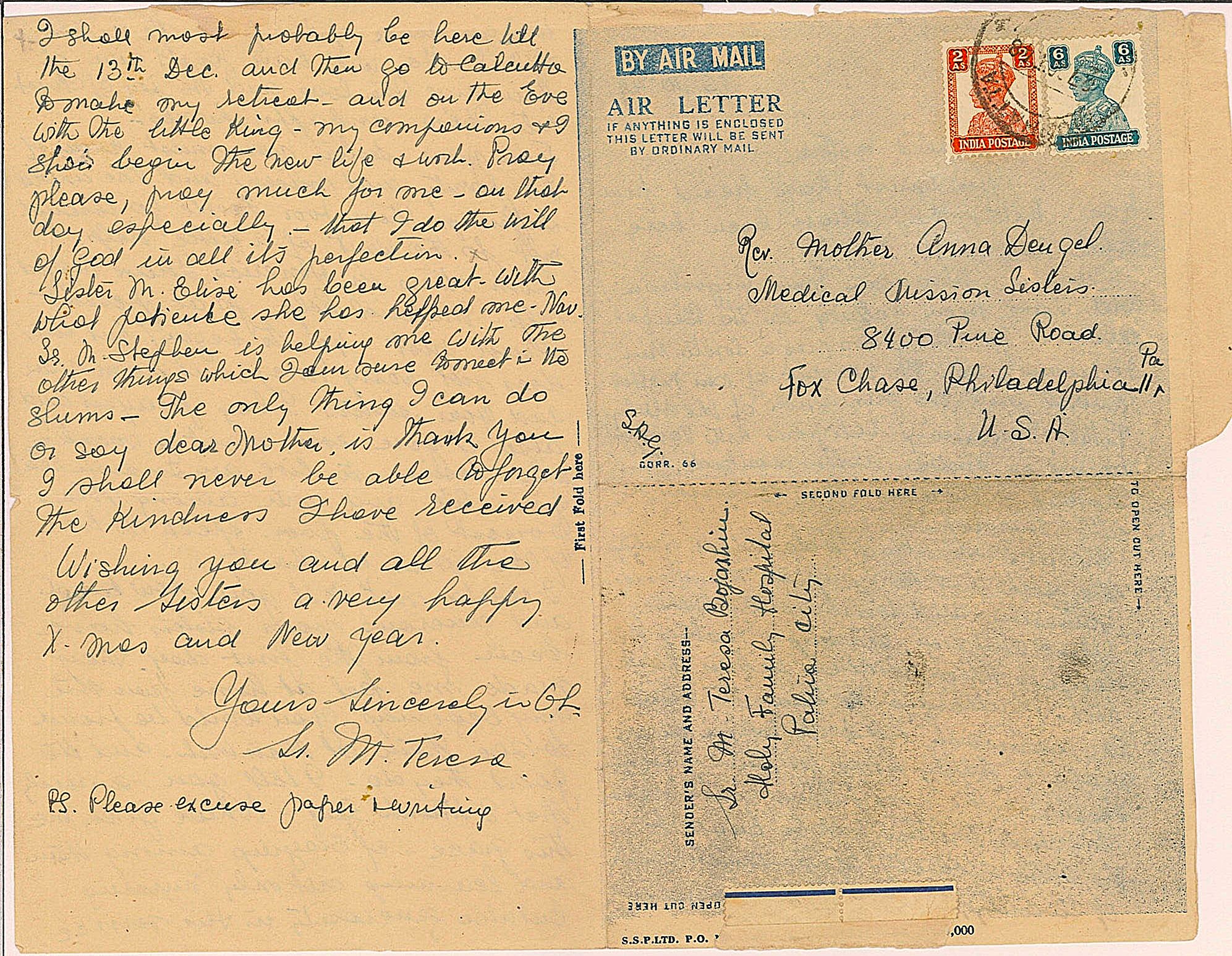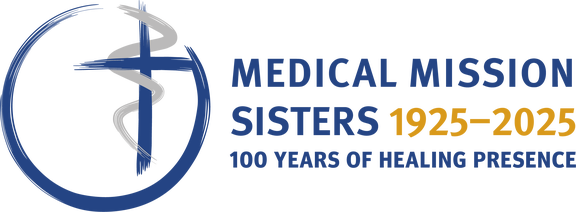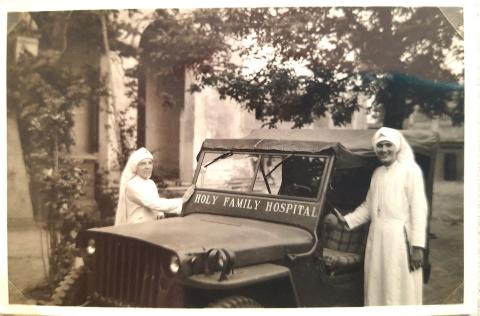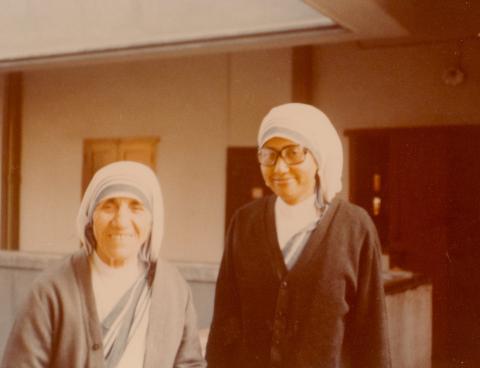1944
As many of you will know, modern day saint, Saint Mother Teresa, came to learn how to care for the sick and the dying at the Society’s Holy Family Hospital in Patna, India, in the 1940s before setting up her own Missionaries of Charity in Calcutta - now usually known as Kolkata.
Some years later, in 1958, Sister Mary Richard went to visit Mother Teresa and her community in Calcutta. There, during a supper of chapatis and duck eggs fried in mustard oil, Mother Teresa told her the story of work of her charity - noting, in particular, that she did not wish to run large institutions. Her sisters were to go out, two by two, each day into the slums, earning them the title, ‘apostles to the poor.’
During her brief visit, Sister Mary Richard went out with two young Missionaries of Charity as they made their rounds at the ‘bustee’ (an area that is very poor), assigned to them. She found that the ‘bustee’ was a mass of ill ventilated huts, crowded together. It was a colony where there was little sanitation, no roads, a few public wells and a few thousand people. The children came to greet them as they approached the area. One sister set up her school room in the open air and both teacher and students used the sand at their feet as a blackboard. The other Missionary of Charity announced a clean-up campaign with a prize for the neatest hut in the neighbourhood - the coveted prize, being a bar of soap, a luxury item for Calcutta's destitute. As she watched Mother Teresa’s sisters in action, other teams were carrying on their activities elsewhere. Girls were receiving instruction in needlework; boys were taught how to repair the bamboo huts in which they live. The sisters told her that the children pass on these practical skills and ideas to parents and they, in turn, tell friends.
After a four hour stay at the bustee, they walked back to the convent for an hour of prayer in the simple chapel. In true Indian fashion, they knelt on the floor and she watched the intensity with which the Mother Teresa and her sisters made Cardinal Newman's prayer their own: "Jesus, help me to spread Thy fragrance everywhere I go. Flood my soul with Thy spirit so that my life may be a reflection of Thine.”
Finally, Sister Mary Richard finishes by describing her visit to Nirmala Hriday, as follows:
“It would take pages to tell the impressions of an afternoon spent at NirmaIa Hriday, the hospice for those in a dying condition. Mother Teresa secured the house which adjoins a Hindu temple, from city officials, who recognise the value of her work. They cooperate in this project by permitting city ambulances to bring any homeless person, who is desperately ill, to Nirmala Hriday. There, the Sisters wash and feed their guests. For many, it is the first attention they have had for weeks. You can imagine the picture of a simple room large enough to hold from 50 to 60 men who lie side by side, waiting for death. A second room houses the women. All are grateful for the roof over their heads, the food, the attention, the charity.
Today, those who believe in words are few in number; most men demand the testimony of the love of Christ for the multitude. Mother Teresa and her spiritual daughters give them … testimony of the love of Christ for the multitude. Mother Teresa's community is well named … Missionaries of Charity. “
Here you can read Mother Teresa’s words of thanks for the training she received from the Medical Mission Sisters in Patna, hand written in her letter to the Society's founder, Dr Anna Dengel, dated 26th October 1948:




